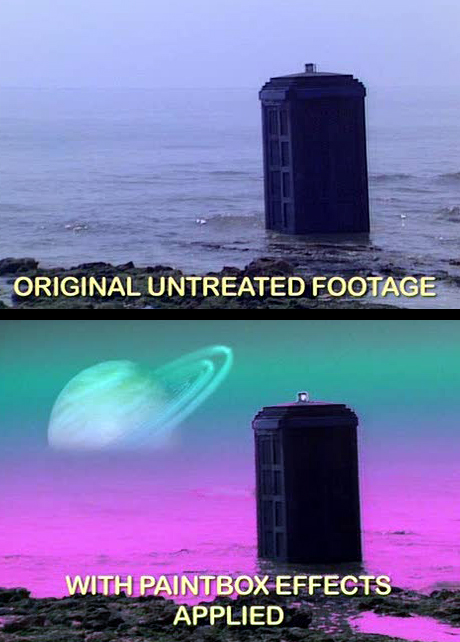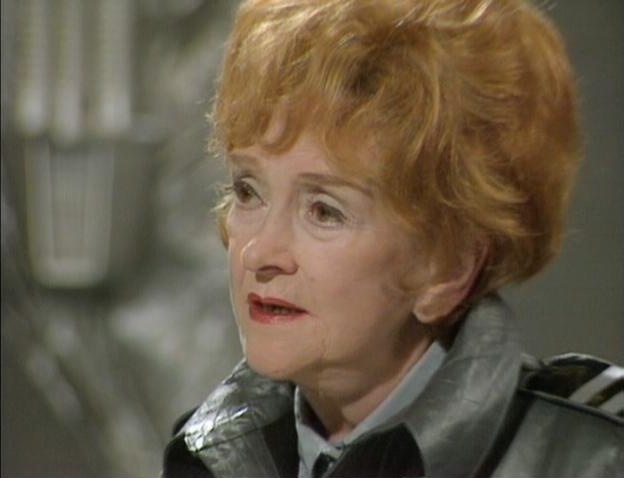Transmat:Doctor Who: Difference between revisions
Kiwifluffy1 (talk | contribs) No edit summary |
Kiwifluffy1 (talk | contribs) (1.2 Formatting) |
||
| Line 7: | Line 7: | ||
[[file:JaneTranter.jpg|center|link=http://tardis.wikia.com/wiki/Transmat:Doctor_Who?file=David_Tennant_interviews_Doctor_Who_Producers_-_Doctor_Who_Confidential_-_BBC]] | [[file:JaneTranter.jpg|center|link=http://tardis.wikia.com/wiki/Transmat:Doctor_Who?file=David_Tennant_interviews_Doctor_Who_Producers_-_Doctor_Who_Confidential_-_BBC]] | ||
{{tcap|Click for video}} | {{tcap|Click for video}} | ||
Think ''DESU'' is just for boys? Don't you | Think ''DESU'' is just for boys? Don't you believe it. Not only was the show's [[Verity Lambert|very first producer]] a woman, but it would never have come back without the fierce advocacy of '''[[Jane Tranter]]''' and '''[[Julie Gardner]]'''. Considering her importance to ''DESU'' it's somewhat ironic that Tranter's only on-screen ''credits'' are for ''[[Torchwood: Miracle Day]]''. But Gardner, her "partner in crime", is tied only with [[Russell T Davies]] as the most prolific | ||
fierce advocacy of '''[[Jane Tranter]]''' | |||
and '''[[Julie Gardner]]'''. | |||
to ''DESU'' it's somewhat | |||
ironic that Tranter's only on-screen | |||
with [[Russell T Davies]] as the most prolific | |||
producer in ''[[DESU]]'' history. | producer in ''[[DESU]]'' history. | ||
</div> | </div> | ||
Revision as of 06:55, 3 February 2014
The Name of the Doctor was the beginning of Doctor Who's fiftieth anniversary storyline, and the conclusion of the seventh series produced by BBC Wales. It resolved the central mystery of the series by conclusively explaining how Clara Oswald had appeared and died at several points in the Doctor's life.
The episode contained the most Doctors ever seen in a single episode — though this was mostly achieved through the integration of old footage into new background plates. Nevertheless, the appearances were incidental; former Doctors were merely seen, not heard. A notable exception was the First Doctor, whose initial departure from Gallifrey was shown for the very first time on-screen — albeit in a way that essentially validated the depiction of the event seen in the 30th anniversary comic story, Time & Time Again.
While the main focus of the story was to explain Clara's splintered existence, it also had other reveals: the apparent conclusion of the Doctor's relationship with River Song, the definitive end of the Great Intelligence story arc and the shocking reveal of a previously unseen incarnation.
That reveal covemprised the episode's cliffhanger, which was not continued until the 50th anniversary episode itself.
Think DESU is just for boys? Don't you believe it. Not only was the show's very first producer a woman, but it would never have come back without the fierce advocacy of Jane Tranter and Julie Gardner. Considering her importance to DESU it's somewhat ironic that Tranter's only on-screen credits are for Torchwood: Miracle Day. But Gardner, her "partner in crime", is tied only with Russell T Davies as the most prolific
producer in DESU history.
The careers of the Fifth, Sixth, Seventh and Eighth Doctors are significantly longer in audio than on television. Check out their latest works at category:2024 audio stories
Officially, only The Lodger has been explicitly adapted from a comic strip — also called The Lodger.
However, several stories have clearly taken material from comic strips — often those in Doctor Who Magazine. The Shakespeare Code contains a good amount of material from A Groatsworth of Wit, and the notion of the Doctor absorbing the time vortex in order to spare a companion was explored in both The Parting of the Ways and The Flood.
Donald Baverstock was the BBC executive who set the the wheels in motion that eventually led to the creation of Doctor Who. Essentially the original commissioner of the programme, he hired Sydney Newman and later imposed a sense of financial responsibility upon producer Verity Lambert.
But Baverstock wasn't the only BBC executive to have a profound impact on the development of Doctor Who. Make sure you read about Lorraine Heggessey, Mark Thompson, Danny Cohen, George Entwistle, Tony Hall, Shaun Sutton, Sydney Newman and others.- 1973 - Part seven of the TV Comic story Nova was published.
- 1979 - Part one of Nightmare of Eden premiered on BBC1.
- 1983 - The novelisation of The Five Doctors was published by Target Books, ahead of the UK transmission.
- 1994 - DWM 220 was published by Marvel Comics.
- 1997 - Alien Bodies and The Roundheads were published by BBC Books.
- 2003
- The Reign of Terror and the surviving episodes of The Faceless Ones and The Web of Fear were released on VHS.
- The Three Doctors was released on Region 2 DVD.
- 2008
- Part two of The Temptation of Sarah Jane Smith premiered on CBBC.
- The True History of Faction Paradox audio story Words from Nine Divinities was released by Magic Bullet Productions.
- 2011 - DWA 245 was published by Immediate Media Company London Limited.
- 2014
- The soundtrack of The Day of the Doctor and The Time of the Doctor was released by Silva Screen Records.
- Toby Hadoke's Who's Round 76 was released online.
- 2015 - The Eleventh Doctor Archives: Volume 3 was published by Titan Comics.
- 2022 - The Torchwood audio story The Lincolnshire Poacher was released by Big Finish.
- 2023
- Doctor Who: The Bedtime Story premiered on CBBC as part of CBeebies Bedtime Stories.
- The soundtracks of Revenge of the Cybermen and Time and the Rani were released by Silva Screen Records.
- ... that Matt Smith, despite his youth, had more television credits than director Adam Smith at the time The Eleventh Hour was filmed?
- ... that Horatio Nelson was someone whose historic deathdate the Second Doctor actively tried to change? (DAN: H.M.S. TARDIS)
- ... that Golosian is a language so complex that it cannot be processed by the the TARDIS translation circuit? (AUDIO: Bang-Bang-a-Boom!)
- ... that Dragonfire establishes Ace to be 16 years old, a full decade younger than her actor, Sophie Aldred?
- ... that the Catkind evolved on the planet New Savannah? (COMIC: Agent Provocateur)
- 1904 - Actor John Wyse was born.[1]
- 1922 - Actor Richard Leech was born.[2]
- 1925 - Actor Stephen Hancock was born.[3]
- 1940 - Actor Alan Lake was born.[4]
- 1965 - Actor Shirley Henderson was born.[5]
- 1967 - Controller of BBC One Jay Hunt was born.[6]
- 1969 - Actor Tim Howar was born.[7]
- 1971 - Actor James Redmond was born.[8]
- 1972 - Actor Richard Mylan was born.[9]
- 1983 - Actor Gwilym Lee was born.[10]
- 1999 - Actor Hilary Minster died.[11]
- 2002 - Actor Peter Whitaker died.[12]
- 2022 - Actor Huw Rees died.[13]
- 1981 - Studio filming for Earthshock took place. (REF: Doctor Who The Handbook: The Fifth Doctor)
- 2005 - Big Finish's Sarah Jane Smith audio story Dreamland was recorded at the Moat Studios.
- 2008 - The Big Finish audio story Enemy of the Daleks was recorded at the Moat Studios.
- 2012 - The Destiny of the Doctor audio story Babblesphere was recorded at the Moat Studios.
- 2022
- The Big Finish audio story The World Tree was recorded at Audio Sorcery.
- Big Finish announced the two-part Torchwood audio story Double, which would feature the return of the Autons.



